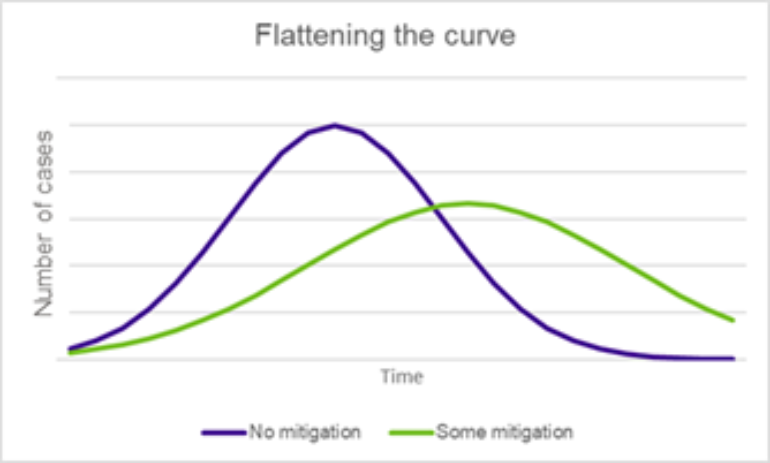Flattening the curve (epidemiology)
\flætənɪŋ\ \ðə\ \kɜrv\ \(ˌɛpəˌdɛmiˈɑləʤi)\
The process of the number of people infected by a disease being spread out over a longer time period than initially predicted.
The curve in question is the number of cases of the disease identified per day over time. The steeper the curve, the more people will have the disease at the same time and the more overwhelmed health services will become. Flattening the curve means to spread out the number of people with the disease over time, giving a better chance to contain the disease or to help those who do end up contracting it.
This is the aim of mitigation policies such as quarantine, isolation or social distancing, where a high peak of cases over a short time is flattened out to a lower peak over a longer period.
